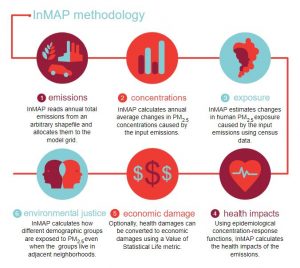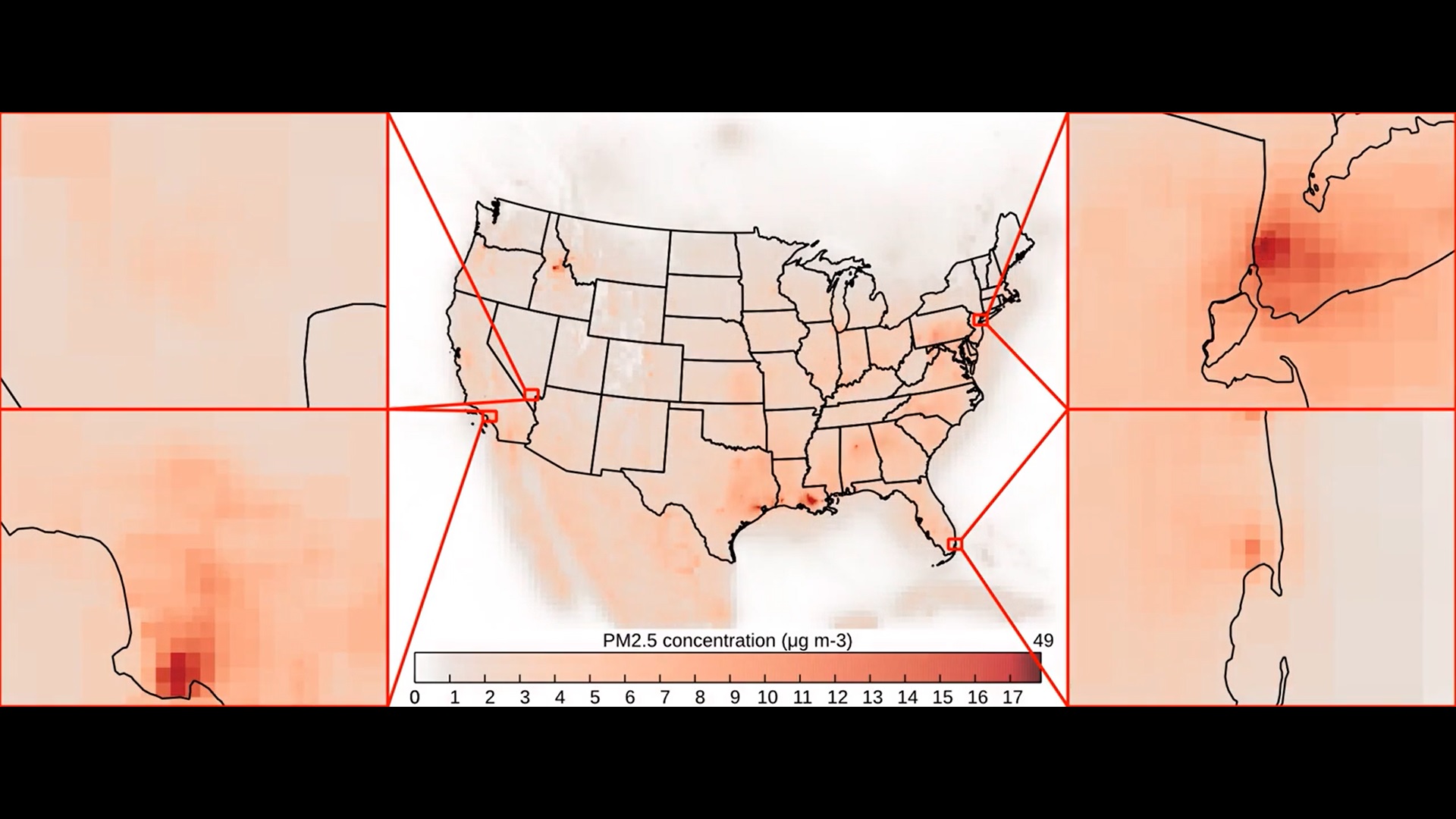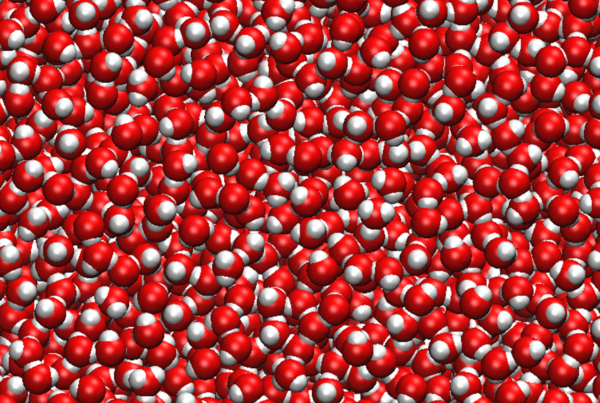A new air quality model designed to estimate the costs of air pollution on human health received a boost in its early development from computing time at the Oak Ridge Leadership Computing Facility (OLCF), a US Department of Energy (DOE) Office of Science User Facility at DOE’s Oak Ridge National Laboratory (ORNL).
InMAP (Intervention Model for Air Pollution), an open-source tool that delivers high-resolution results on users’ desktop computers, translates emissions changes into economic and health consequences in a simple and computationally inexpensive way. The model lowers the barrier for non-computing experts to quantify the downsides of air pollution and test scenarios related to environmental policy and economic planning.
The team behind InMAP—Jason Hill, an associate professor at the University of Minnesota; Christopher Tessum, a research scientist at the University of Washington (UW); and Julian Marshall, a UW professor—created the model with a range of users in mind: academics, policymakers, environmental regulators, civic leaders, and others interested in air quality.
“We wanted to develop a model that would allow us to understand the human health impacts of changing emissions more rapidly than comprehensive chemical transport models, which typically require a supercomputer to run,” Hill said. “Ironically, our model was only possible because we created it using data generated by supercomputers.”

A graphic illustrating how the InMAP reduced-complexity air quality model works. To operate the software, users supply an emissions profile that characterizes pollution sources. InMAP then runs the simulation until it converges on a solution, providing an estimate of factors such as where the pollution travels, who is impacted, and the economic and health costs.
In 2011, Hill and his colleagues received a Director’s Discretionary allocation at the OLCF to run a chemical transport code called WRF-Chem to simulate the emission, transport, mixing, and chemical transformation of pollutants, which can linger in the atmosphere and combine to form a range of harmful compounds. The team used its time on leadership-class resources to refine their spatial resolution grid of the United States. The work contributed to an enhanced grid that can track the behavior of pollutants down to 1 kilometer in densely populated areas.
Of particular interest to the team was predicting the formation and behavior of fine particulate matter—particles smaller than 2.5 microns created by industrial processes like combustion.
“This is the air pollution metric that the vast majority of social costs are attributed to, outcomes such as cardiovascular disease and premature mortality,” Hill said.
Simplified results from the team’s OLCF simulations were used to inform InMAP. The reduced-complexity model cuts out the computational cost by focusing solely on the annual average concentration of pollutants in a given area. In addition, the team implemented a variable grid that adjusts the size of grid cells as a simulation runs.
To use the software, users supply an emissions profile that characterizes pollution sources. InMAP then runs the simulation until it converges on a solution, providing an estimate of factors such as where the pollution travels, who is impacted, and the economic and health costs.
“A tool like this makes it easier for people to explore the implications of a policy such as the Clean Power Plan, which aims to regulate carbon dioxide emissions from power plants,” Hill said. “You can quickly run through multiple scenarios to get an assessment.”
Under a grant from the US Environmental Protection Agency, the InMAP team is currently participating in a multi-institutional effort to develop a reduced-complexity model that spans air quality, climate, and energy. The results could lead to an even more robust tool to guide policymakers.
In addition, the team is expanding InMAP’s capabilities using resources at the Minnesota Supercomputing Institute to create a global version of the software and to add to the number of pollutants that the model tracks.
“There are all sorts of capabilities we’re interested in adding,” Hill said.
Related publication: Christopher W. Tessum, Jason D. Hill, and Julian D. Marshall, “InMAP: A Model for Air Pollution Interventions.” PloS ONE 12, no. 4 (April 19, 2017): e0176131, https://doi.org/10.1371/journal.pone.0176131.
ORNL is managed by UT-Battelle for the Department of Energy’s Office of Science, the single largest supporter of basic research in the physical sciences in the United States. DOE’s Office of Science is working to address some of the most pressing challenges of our time. For more information, please visit https://science.energy.gov/.






